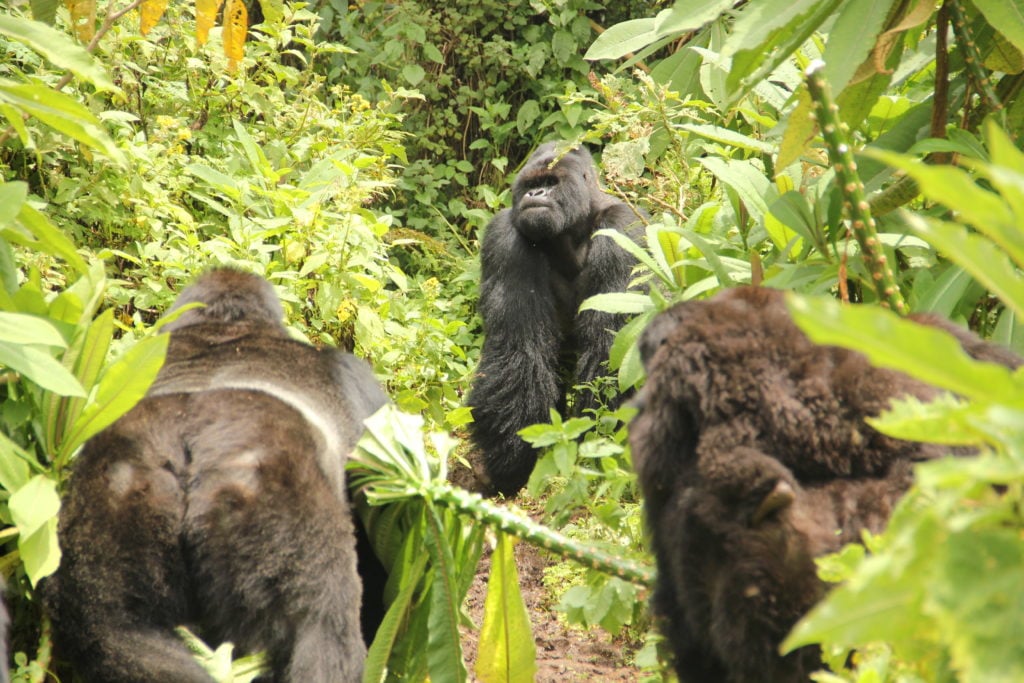Fact 1:
Aside from a few exceptions, groups consist of more adult females than adult males.
Most subspecies of gorillas have groups that consist of one dominant adult male, multiple adult females and their young. However, mountain gorilla groups have been seen supporting up to eight silverbacks at one time! Each of these silverbacks will have a slightly different role with a clear hierarchy.
Follow this link to learn more about the roles of each silverback male in the group! https://gorillafund.org/male-hierarchy-and-a-gorilla-groups-success/

Fact 2:
Once a male gorilla reaches maturity, it has three ‘options’.
First, they can stay in their natal group and queue for dominance. And excellent example of this is the famous Cantsbee. About 50% of males stay in their natal group, although not all eventually end up becoming dominant.
Second, they can strike out as solitary males to try to create a family of their own by stealing females from other males. If the male is unsuccessful in acquiring females, they may roam around alone until they are successful.
Finally, they male form or join a bachelor group, which is an all-male group. Titus is a famous Karisoke gorilla who spent some of his formative years in a bachelor group. These groups will help the male gorillas learn skills that are needed to become a successful leader before having a family group of their own. Even in the bachelor groups you will see a hierarchy form. Just like a silverback would determine where to travel and when to stop in a family group, the dominant male in a bachelor group may do the same.

Fact 3:
Gorillas are pretty unique in that both male and female gorillas may either stay in or leave their natal group.
In other primate species, you can see females staying in their natal group with male dispersal, or males staying in their natal group with female dispersal. For gorillas, both males and females are observed leaving their natal groups as well as saying in their natal groups for their entire lives! Females may even transfer groups multiple times throughout their lives, leading to her producing offspring with several males.

Fact 4:
Each group has its own dominance hierarchy.
As previously mentioned in fact 1, there is a hierarchy among males. Females will also have a hierarchy of their own. For males, if there are multiple adult silverbacks, one will be dominant above the rest and make decisions such as where to sleep and eat. Other silverbacks may aide in protecting the group and resolving conflicts.
The hierarchy among females may be based on age, as well as an individual’s length of time in the group, where a newcomer would generally be the lowest in the hierarchy. A female could also rise in status if the dominant male is particularly interested in her. Other factors, such as offspring may also change the hierarchy, where females with newborns may rise in rank.

Fact 5:
Groups of gorillas may be as small as 2 individuals and as large as 65!
While the average group size is around 10-12 individuals, groups have been seen to have as few as a single breeding pair, or two silverback gorillas, to as many as 65 individuals! The record breaking group of 65 gorillas was Pablo’s group while it was under the leadership of the legendary gorilla, Cantsbee. Since the passing of Cantsbee, the group is no longer the size it once was. Pablo’s group is currently ran by Gicurasi and the young silverback Kureba split off taking members of the group with him.







